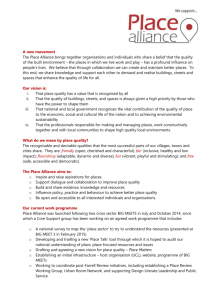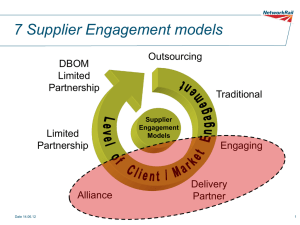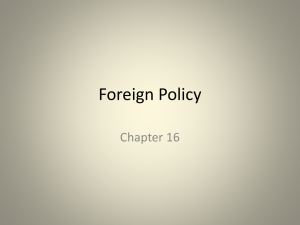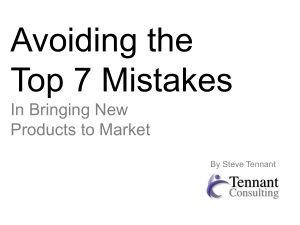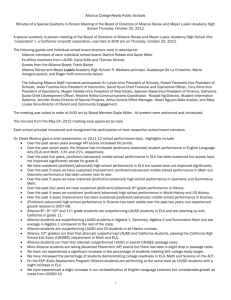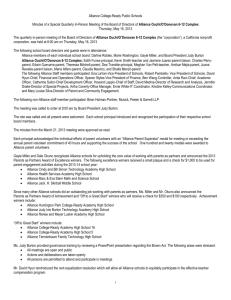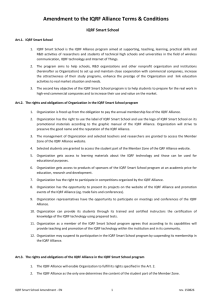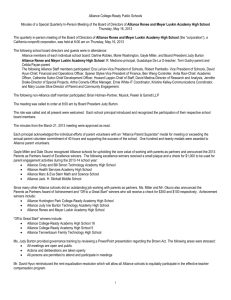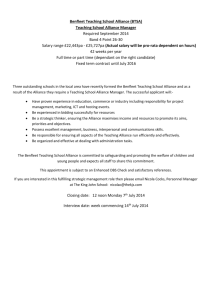GB6_E
advertisement
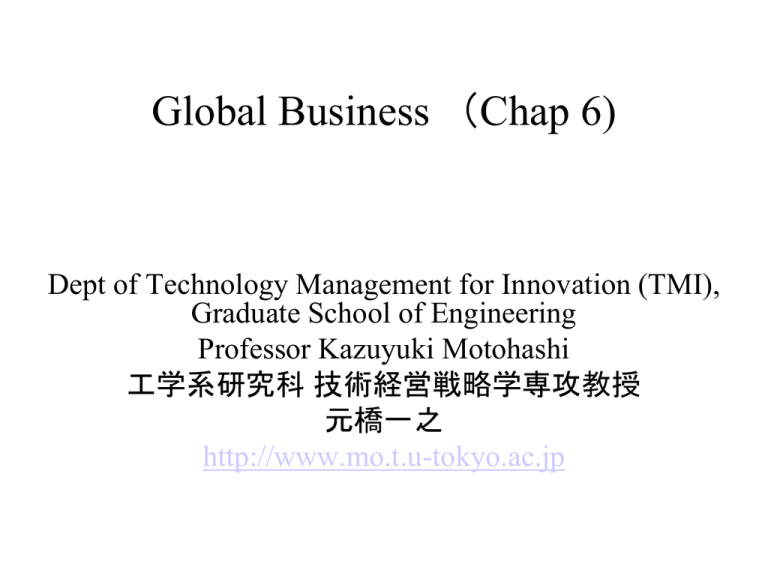
Global Business (Chap 6) Dept of Technology Management for Innovation (TMI), Graduate School of Engineering Professor Kazuyuki Motohashi 工学系研究科 技術経営戦略学専攻教授 元橋一之 http://www.mo.t.u-tokyo.ac.jp Today’s Class • Method of reaching international markets and strategic alliance • Strategic alliance case: electronics industry • Alliance management (post partnership activities) • Example: PPP (Public Private Partnership) for Infrastructure business (the government as a partner) • Introduction to group work What ifs in your business Case 1: Your company is exporting products to China, but local competition becomes intense and market share decreases. – Reduce cost? – New products meeting local taste? Case 2: Your customer company (your company is a auto parts supplier) demands you to open your factory in China. – How to manage initial investment? – This customer’s demand is enough to pay for the investment? How to find a new customer (local automotive company)? Method of reaching international markets Export (direct and indirect) Contractual Arrangement Franchising, Licensing, outsourcing Joint R&D, production, marketing Minority equity investment Equity Arrangement Setting up joint entity (Joint venture) Strategic Alliance Wholly owned subsidiary or Acquisitions Mini Case: JV or 100% subsidiary Setting Electronics firms seek for FDI in China Discussion point • JV or 100% subsidiary (upsides, downsides) • JV mitigates risks? What kinds of? • Any particular risks associated with JV? Why alliance? with whom? Mitigation of risks associated with initial investments? (Lower entry barriers) • What about exit cost? Complementality of managerial assets? • Local networks, channels, etc. • Any difference by AAA triangle? Local regulations, government relationship • Compliance with local regulation (automobile industry in China) • In case of “by invitation” (Shiseido in China, Suzuki in India) Growing importance of strategic alliance Strategic alliance Regular JV Core business Non core business Wide area and broad terms Specific area (ex. SPC) Sometimes multiple counter-parts One to one Cooperation and competition (Co-petition) Specific purpose (ex. Risk mitigation) Strategic alliance and value creation Cospecialization Alliance Advantage, by Doz and Hamel Strategic alliances in electronics industry Semiconductor NEC electronics + Renesas Electronics -> Merged and divested out “system LSI factories” to TSMC Flat panel display Sony + Samsung (Korea) -> divorced Panasonic + Pioneer -> acquired Shape + Hong Hai (Taiwan) -> not reach agreement Home appliance Panasonic + Sanyo Denki -> acquired only PV and divested out home appliance to Haier Computers and telecom equipment Oracle + Sun SAP + Microsoft + HP Post partnership management Why? – – Contract is not perfect, complete mutual understanding in impossible in due diligence process. A form of partnership may be determined by partner (country). A lot of contingencies during contract period (international alliance take a long time relationship, dynamic environmental change in emerging economies. What?: Formal governance (such as contract and equity owner ship) and informal governance (mutual understanding and trust) – Trust lowers coordination cost (cooperative behavior toward any contingency) – Trust is build through (1) cyclical process of bargaining, (2) interactions, (3) commitment and (4) executions (Ring & Van de Ven, 1994). Forms of post partnership management 1. Greater alliance experience 2. Dedicated alliance management function 3. Process to learn and accumulate knowhows from experience Some advanced questions 1. Similar process to post merger integration? 2. Alliance with government, NGOs? 3. Alliance portfolio management Government as a partner : global infrastructure business • Infrastructure development needs in Asia until 2020 reaches $8 trillion due to urbanization (METI estimates). • Public money cannot cover such amount, so that PPP (public private partnership) is needed. • Analyzing infrastructure business is important • Risk analysis and simulation • Business modeling with relevant players Types of PPP (Public Private Partnership) Design • • • • • • Build Operation BOT (Build Operate Transfer): concession contract BOO (Build Own Operate) Leasing: Public leases out for private, affermarge Joint Venture Operations or management contract Cooperative arrangement: public supports to private Complex system of PPP project Host country Government Influence $$$(ODA) Japanese Government Contract Contractor Policy Project Company (SPC) Supplier Local Partner Agent based modeling Dynamic linear programming Equity Investor Customer Lender Risk factors in infrastructure business EPC Phase O&M Phase SPC/SPV Supplier (ex fuel) Price change Mainly market (commercial) risk Completion risk ex. cost over-run, delay EPC contractors Quantity change Price change Secure land Price control Regulation change Local government/ public entities Customers Introduction to group work: business plan items • Executive Summary • What is your company? (in case, you represent a particular company such as Hitachi) • Management Team and Division of Labor • What kind of global infrastructure related business? – Summary of your new business including information on the country or the region of your business to be introduced – Business model of your proposal • Who’s your customer? • Market and competitor analysis – Risk analysis • Potential risks and contingency plan • Business execution planning (HOW) – Partnership with local players (with whom? why?) – Local operation – Marketing plan • Business Plan Evaluation (such as NPV, IRR analysis) 15 min presentation in the last class of this course NPV Project Evaluation O&M (Operation and Management) Cash Flow EPC (Engineering, Procurement and Construction) T CFt NPV t ( 1 r ) t 1 IRR r ( NPV 0)




